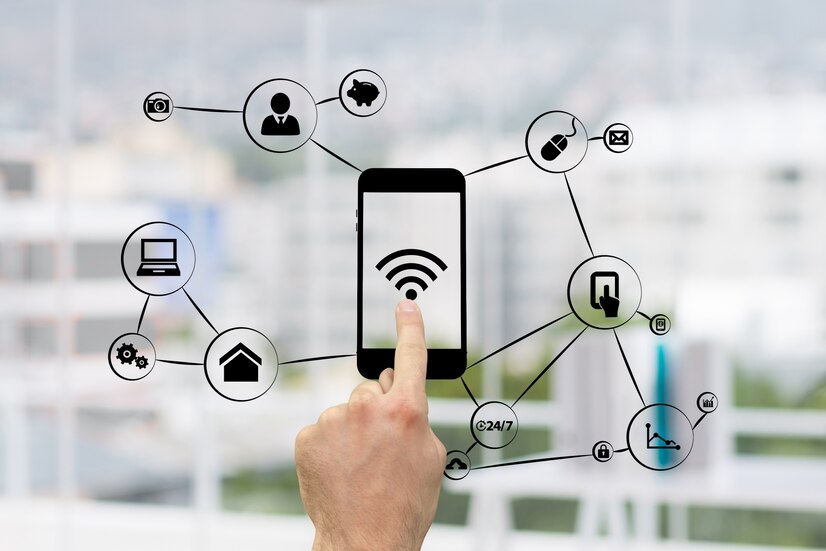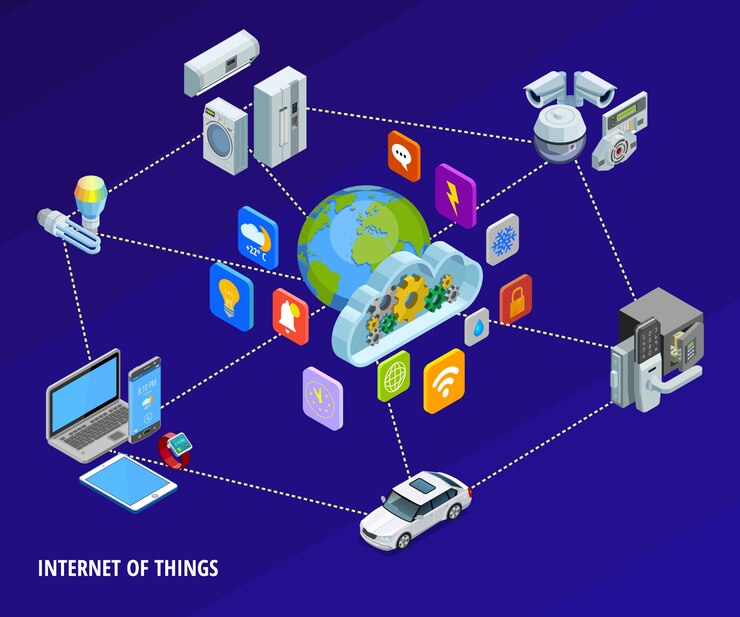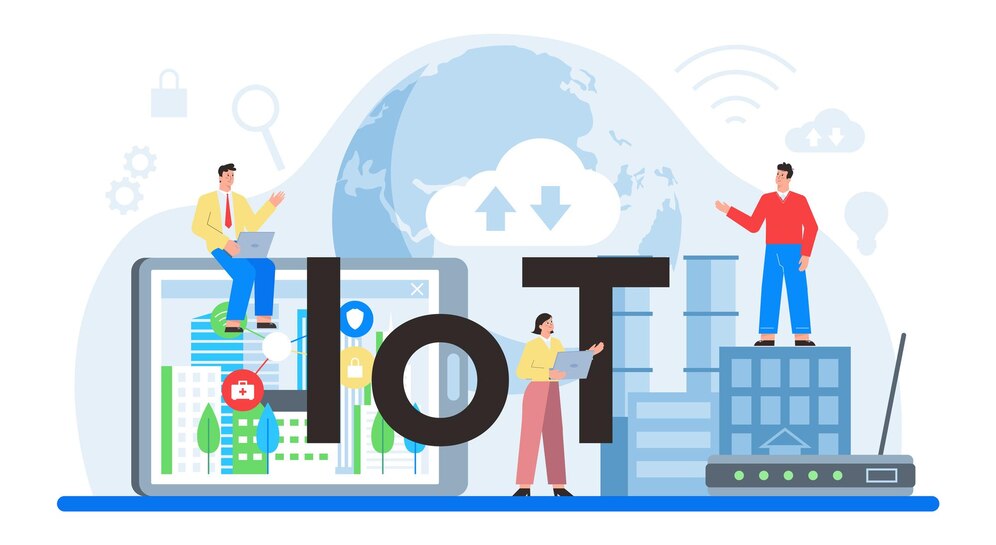The Internet of Things has evolved from a futuristic concept to an integral part of our daily lives. Every day, billions of connected devices communicate, collect data, and make intelligent decisions that shape how we live, work, and interact with our environment. From the smartwatch monitoring your heart rate to industrial sensors predicting equipment failures, IoT technology is creating an interconnected world that’s more responsive and efficient than ever before.
This transformation isn’t happening in isolation. As IoT devices become more sophisticated and widespread, they’re fundamentally changing industries, creating new business models, and raising important questions about privacy, security, and the future of human-technology interaction. Understanding these changes isn’t just for tech enthusiasts – it’s essential for anyone navigating our increasingly connected world.
What Exactly Is the Internet of Things?
The Internet of Things refers to the vast network of physical devices embedded with sensors, software, and connectivity that enables them to collect and exchange data. These smart devices range from simple temperature sensors to complex autonomous systems, all working together to create intelligent environments.
At its core, IoT is about giving everyday objects the ability to sense their environment, process information, and take action without human intervention. This capability transforms passive objects into active participants in our digital ecosystem, creating opportunities for automation, optimization, and entirely new services.
The power of IoT lies not just in individual devices but in their collective intelligence. When millions of devices share data and insights, patterns emerge that help us understand and improve everything from traffic flow to energy consumption. This network effect multiplies the value of each connected device, creating a whole that’s far greater than the sum of its parts.
Core Components of IoT Systems
Every IoT system consists of four fundamental components working in harmony. First, sensors and actuators serve as the system’s eyes, ears, and hands, collecting data from the physical world and taking action based on processed information.

Second, connectivity technologies enable devices to share data with each other and with central systems. This includes everything from Wi-Fi and Bluetooth to cellular networks and specialized IoT protocols designed for low power consumption and long-range communication.
Third, data processing capabilities, whether on the device itself (edge computing) or in the cloud, transform raw sensor data into actionable insights. This processing ranges from simple threshold alerts to complex machine learning algorithms that predict future events.
Finally, user interfaces allow humans to interact with IoT systems, whether through smartphone apps, voice assistants, or automated dashboards. These interfaces make the complexity of IoT systems accessible and useful to everyday users.
How Are Smart Homes Evolving with IoT?
The smart home represents one of the most visible and rapidly advancing applications of IoT technology. Today’s connected homes go far beyond simple remote control, creating living spaces that adapt to our needs, learn our preferences, and anticipate our desires.
Integrated Home Ecosystems
Modern smart homes feature deeply integrated ecosystems where devices work together seamlessly. Your smart thermostat doesn’t just maintain temperature – it communicates with occupancy sensors, checks weather forecasts, and learns your schedule to optimize comfort while minimizing energy use.
Security systems have evolved into comprehensive home awareness platforms. Smart cameras use AI to distinguish between family members, delivery people, and potential intruders. Door locks communicate with security systems and can grant temporary access to service providers or guests through smartphone apps.
Entertainment systems now create immersive experiences by coordinating multiple devices. Smart TVs, speakers, and lighting work together to adjust audio, video, and ambiance based on what you’re watching. Voice assistants serve as central hubs, allowing natural language control of dozens of connected devices.
Energy Management and Sustainability
IoT technology is revolutionizing home energy management. Smart meters provide real-time data on energy consumption, while intelligent appliances optimize their operation based on electricity rates and grid demand. This two-way communication with utility companies enables demand response programs that benefit both consumers and the environment.
Solar panels equipped with IoT sensors maximize energy production by tracking weather conditions and adjusting angles for optimal sun exposure. Battery storage systems intelligently manage power distribution, storing excess energy when production exceeds demand and releasing it during peak usage times.
Water conservation benefits from IoT innovation too. Smart irrigation systems adjust watering schedules based on soil moisture, weather forecasts, and plant needs. Leak detection sensors can identify problems before they cause damage, automatically shutting off water supplies and alerting homeowners.
What Are the Latest Industrial IoT Applications?
Industrial IoT, or IIoT, is transforming manufacturing, logistics, and infrastructure management. These applications often operate behind the scenes but have profound impacts on efficiency, safety, and productivity.
Predictive Maintenance Revolution
One of the most valuable IIoT applications is predictive maintenance. Sensors continuously monitor equipment health, tracking vibration, temperature, pressure, and other indicators of performance. Machine learning algorithms analyze this data to predict failures before they occur, allowing maintenance teams to address issues during planned downtime.
This approach dramatically reduces unexpected equipment failures and extends asset life. In industries where downtime costs thousands of dollars per minute, predictive maintenance delivers massive returns on investment. Airlines use IoT sensors to monitor engine performance, predicting maintenance needs and preventing costly delays.
Manufacturing plants deploy thousands of sensors across production lines, creating digital twins – virtual replicas of physical systems. These digital twins enable engineers to simulate changes, optimize processes, and identify bottlenecks without disrupting actual production.
Supply Chain Visibility
IoT technology provides unprecedented visibility into global supply chains. GPS-enabled trackers monitor shipment locations in real-time, while environmental sensors ensure that temperature-sensitive products like vaccines or food remain within safe ranges throughout transport.
Smart containers equipped with IoT devices can detect tampering, monitor cargo conditions, and even reroute themselves based on changing logistics needs. This level of visibility helps companies reduce losses, improve delivery times, and respond quickly to disruptions.
Warehouse operations benefit from IoT through automated inventory management. RFID tags and sensors track product movement, updating inventory systems automatically and reducing human error. Autonomous robots guided by IoT systems retrieve products and optimize warehouse layouts based on demand patterns.
Smart Agriculture Transformation
Agriculture is experiencing an IoT revolution that’s making farming more precise, productive, and sustainable. Soil sensors measure moisture, nutrients, and pH levels, providing farmers with detailed field maps that guide planting and treatment decisions.
Drones equipped with multispectral cameras survey crops, identifying pest infestations, disease, and irrigation issues invisible to the human eye. This early detection allows targeted intervention, reducing pesticide use and improving yields.
Livestock monitoring has also advanced significantly. Wearable devices track animal health, detecting illness early and monitoring breeding cycles. Automated feeding systems adjust nutrition based on individual animal needs, improving health outcomes and productivity.
How Is IoT Revolutionizing Healthcare?
Healthcare IoT applications are improving patient outcomes, reducing costs, and enabling new forms of care delivery. From wearable devices to smart hospitals, connected technology is transforming every aspect of healthcare.
Remote Patient Monitoring
Wearable devices and home health monitors allow continuous tracking of patient vitals outside hospital settings. Devices measure heart rate, blood pressure, glucose levels, and other critical indicators, transmitting data to healthcare providers in real-time.
This continuous monitoring enables early intervention for chronic conditions, reducing hospital readmissions and improving quality of life. Patients with heart conditions, diabetes, or respiratory issues benefit particularly from IoT-enabled care management.
Smart pill bottles remind patients to take medications and alert caregivers to missed doses. Ingestible sensors confirm medication adherence, providing valuable data for treatment optimization. These technologies are especially valuable for elderly patients or those with complex medication regimens.
Smart Hospital Infrastructure
Hospitals are deploying IoT systems to improve operational efficiency and patient care. Asset tracking systems monitor the location of critical equipment, reducing time spent searching for devices and ensuring availability when needed.
Environmental monitoring systems maintain optimal conditions in operating rooms, pharmacies, and patient areas. These systems automatically adjust temperature, humidity, and air quality while alerting staff to any deviations that could affect patient safety or medication efficacy.
Patient flow optimization uses IoT sensors and analytics to reduce wait times and improve resource utilization. Real-time location systems track patient movement through facilities, identifying bottlenecks and enabling staff to respond proactively to delays.
Telemedicine and Connected Care
IoT devices enable sophisticated telemedicine applications that go beyond simple video consultations. Connected diagnostic devices allow remote physical examinations, with doctors able to listen to heart sounds, examine ears and throats, and perform other assessments from miles away.
Rehabilitation programs use IoT-enabled devices to monitor patient progress and adjust therapy remotely. Motion sensors track exercise compliance and form, while providing real-time feedback to both patients and therapists.
Mental health applications leverage IoT data from smartphones and wearables to detect changes in behavior patterns that might indicate declining mental health. These systems can alert healthcare providers to potential issues before they become critical.
What Role Does Edge Computing Play in IoT?
Edge computing has become crucial for IoT deployments, processing data closer to where it’s generated rather than sending everything to distant cloud servers. This approach reduces latency, improves reliability, and addresses privacy concerns.

Real-Time Processing Capabilities
Many IoT applications require immediate responses that cloud processing can’t provide. Autonomous vehicles must make split-second decisions based on sensor data. Industrial safety systems need to shut down equipment instantly when detecting dangerous conditions. Edge computing enables these real-time responses by processing data locally.
Video analytics particularly benefit from edge processing. Security cameras can identify threats and alert personnel without streaming massive amounts of video to the cloud. Retail stores use edge-based analytics to monitor customer behavior and optimize store layouts in real-time.
Manufacturing quality control systems use edge computing to inspect products at production speeds. AI models running on edge devices can identify defects instantly, removing faulty items before they progress further down the line.
Bandwidth and Cost Optimization
Processing data at the edge significantly reduces bandwidth requirements and associated costs. A single autonomous vehicle generates terabytes of data daily – transmitting all this to the cloud would be impractical and expensive. Edge computing filters and processes this data locally, sending only relevant insights to central systems.
Smart city deployments face similar challenges. Traffic cameras, environmental sensors, and other devices generate enormous data volumes. Edge computing enables these systems to operate efficiently by processing data locally and transmitting only aggregated results or anomalies.
This approach also improves system reliability. If internet connectivity is lost, edge devices can continue operating autonomously, storing critical data until connections are restored. This resilience is essential for mission-critical applications.
How Are IoT Networks Becoming More Secure?
As IoT devices proliferate, security has become a paramount concern. The industry is implementing new approaches to protect against threats while maintaining the openness and interoperability that make IoT valuable.
Device-Level Security Innovations
Modern IoT devices incorporate security features from the ground up. Secure boot processes ensure devices start with verified software, preventing malware installation. Hardware-based security modules store encryption keys and credentials in tamper-resistant chips.
Regular firmware updates have become standard practice, with many devices now supporting over-the-air updates that patch vulnerabilities without user intervention. Automated update systems ensure even deployed devices remain protected against emerging threats.
Device authentication has evolved beyond simple passwords. Certificate-based authentication, biometric sensors, and multi-factor authentication provide stronger security while remaining user-friendly. These measures prevent unauthorized devices from joining networks and accessing sensitive data.
Network Security Architecture
Zero-trust security models are becoming standard for IoT deployments. These architectures assume no device or user should be trusted by default, requiring continuous verification regardless of network location. This approach is particularly important for IoT systems that span multiple locations and organizations.
Network segmentation isolates IoT devices from critical systems, limiting potential damage from compromised devices. Virtual LANs and software-defined networking enable fine-grained control over device communications, ensuring that a compromised smart bulb can’t access sensitive corporate data.
Blockchain technology is finding applications in IoT security, providing tamper-proof logs of device interactions and enabling secure device-to-device transactions without central authorities. This decentralized approach is particularly valuable for multi-party IoT systems where trust is distributed.
Privacy Protection Measures
Privacy-preserving technologies are addressing concerns about IoT data collection. Differential privacy techniques add noise to collected data, protecting individual privacy while maintaining statistical accuracy for analytics.
Data minimization principles encourage collecting only necessary information and deleting it when no longer needed. Smart home devices increasingly process sensitive data locally rather than sending it to cloud servers, giving users more control over their information.
Regulatory frameworks like GDPR and California’s IoT security law are driving privacy improvements. Manufacturers must now provide clear information about data collection and give users meaningful control over their information. These requirements are raising the bar for IoT privacy protection globally.
What’s Next for IoT Technology?
The future of IoT promises even more transformative changes as emerging technologies mature and converge. Understanding these trends helps prepare for the connected world of tomorrow.
AI and Machine Learning Integration
Artificial intelligence is becoming integral to IoT systems, moving beyond simple rule-based automation to truly intelligent behavior. Devices are learning from experience, adapting to user preferences, and making increasingly sophisticated decisions autonomously.
Federated learning enables IoT devices to collectively improve AI models without sharing raw data. This approach maintains privacy while allowing devices to benefit from collective intelligence. Smart thermostats, for example, can learn optimal settings from millions of homes without accessing individual data.
Natural language processing is making IoT interactions more intuitive. Voice assistants understand context and intent better, while devices can explain their actions and reasoning in human terms. This transparency builds trust and makes complex IoT systems accessible to non-technical users.
5G and Advanced Connectivity
The rollout of 5G networks is unlocking new IoT possibilities. Ultra-low latency enables real-time applications like remote surgery and autonomous vehicle coordination. Massive device capacity supports dense IoT deployments in smart cities and industrial facilities.
Satellite IoT connectivity is extending coverage to remote areas where terrestrial networks aren’t practical. Low Earth orbit satellite constellations provide global coverage for applications like ocean monitoring, wildlife tracking, and rural agriculture.
New communication protocols designed specifically for IoT continue to emerge. These protocols balance power consumption, range, and data rates for specific use cases, enabling battery-powered devices to operate for years without maintenance.
Sustainable IoT Solutions
Sustainability is becoming a core design principle for IoT systems. Energy harvesting technologies allow devices to operate without batteries, drawing power from solar, thermal, or kinetic sources. This approach reduces electronic waste and enables deployments in locations where battery replacement is impractical.
Circular economy principles are influencing IoT device design. Manufacturers are creating modular devices that can be upgraded rather than replaced, and implementing take-back programs for end-of-life equipment. These initiatives reduce the environmental impact of billions of connected devices.
IoT technology itself is becoming a powerful tool for sustainability. Smart grids optimize renewable energy distribution, precision agriculture reduces resource waste, and intelligent transportation systems decrease emissions. The environmental benefits of IoT applications often far outweigh their resource consumption.
Frequently Asked Questions
How many IoT devices are currently in use worldwide?
Current estimates indicate over 15 billion IoT devices are active globally, with projections reaching 30 billion by 2030. This includes everything from consumer wearables and smart home devices to industrial sensors and connected vehicles. The growth rate continues to accelerate as costs decrease and new applications emerge.
What’s the difference between IoT and IIoT?
While both involve connected devices, Industrial IoT (IIoT) specifically refers to applications in manufacturing, energy, transportation, and other industrial sectors. IIoT typically requires higher reliability, security, and performance than consumer IoT. IIoT devices often operate in harsh environments and support critical processes where failures could have serious safety or financial consequences.
Do IoT devices work without internet connectivity?
Many IoT devices can operate without constant internet connectivity using local networks or edge computing. Smart home devices often communicate via local protocols like Zigbee or Z-Wave, requiring internet only for remote access or cloud features. Industrial IoT systems frequently use private networks and edge processing to maintain functionality even when internet connections fail.
How can I secure my IoT devices at home?
Start by changing default passwords on all devices and enabling two-factor authentication where available. Keep firmware updated, use a separate network for IoT devices, and disable unnecessary features. Research devices before purchasing, choosing products from reputable manufacturers with good security track records. Regularly review which devices have network access and remove those no longer needed.
What skills are needed for IoT careers?
IoT professionals benefit from diverse skill sets combining hardware, software, and networking knowledge. Programming languages like Python, C++, and JavaScript are valuable, along with understanding of embedded systems, cloud platforms, and data analytics. Soft skills including problem-solving, system thinking, and communication are equally important as IoT projects often involve cross-functional teams.
Are IoT devices environmentally friendly?
IoT devices have mixed environmental impacts. While they consume resources in manufacturing and operation, many IoT applications significantly reduce overall environmental impact through efficiency improvements. Smart thermostats reduce energy consumption, precision agriculture minimizes water and chemical use, and predictive maintenance extends equipment life. The key is choosing IoT solutions where efficiency gains outweigh resource costs.
The Internet of Things continues to evolve at a breathtaking pace, transforming how we interact with the physical world. As connected devices become more intelligent, secure, and sustainable, they’re creating opportunities we’re only beginning to explore. Understanding and embracing IoT technology today positions us to thrive in an increasingly connected future where the boundaries between physical and digital worlds continue to blur. The journey toward connecting everything has only just begun, and the possibilities ahead are limited only by our imagination.
